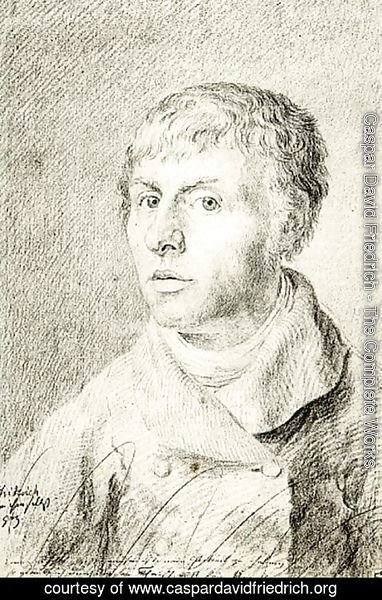Caspar David Friedrich
(1774-1840)

Caspar David Friedrich was from 19th century Germany. He was a very important painter in art history. His art was inspired by the romantic movement. He was a landscape artist who saw the beauty in the bleak. He created these beautiful landscape paintings out of a very dull view. He is best known for his paintings with silhouetted figures against the morning, evening, misty, with barren trees, and gothic ruins. His main interest as an artist was nature in all its glory. He would convey the spiritual experiences of life expressed through the landscape.

He was born in Greifswald in northern Germany in 1774. When he was old enough he went to Copenhagen until 1798 before settling in Dresden. The period he grew up in was materialistic which led many to appreciate a new and more simple approach combined with spiritualism. His artwork fully expressed that new spiritualism, as many other artists had goals in that time to create nature in a new form. They wanted to bring landscape art to a new level as it was not seen as a smaller branch of art.

When Germany moved towards modernization, a new urgency was brought to its art, and Friedrichs beautiful yet still creations that evoked a deeper feeling and connection went out of style. Thus, he went out of style in the second half of the nineteenth century. He was rediscovered in 1906 when an exhibition of 32 of his paintings and sculptures was held in Berlin. Onwards his work was appreciated by the Expressionists, surrealists, and existentialists. He is seen as a big player, if not an icon of the German romantic movement, and a painter that is internationally famous and of great importance.

I really enjoy how spiritual or how you feel something more when you look at his drawings. They are neither an overly interesting scene nor colourful, but they have a soft feeling about them. The contrast in the paintings is remarkable and I think it’s that contrast that really makes the viewer feel the softness in the dark or the spiritual connection in the day to day life.
Reference:
Friedrich, Caspar David (1774 – 1840). (2003). In The MacMillan encyclopedia (2nd ed.). Market House Books Ltd. Credo Reference: https://ezproxy.capilanou.ca/login?url=https://search.credoreference.com/content/entry/move/friedrich_caspar_david_1774_1840/0?institutionId=6884
Friedrich, Caspar David. (2018). In P. Lagasse, & Columbia University, The Columbia encyclopedia (8th ed.). Columbia University Press. Credo Reference: https://ezproxy.capilanou.ca/login?url=https://search.credoreference.com/content/entry/columency/friedrich_caspar_david/0?institutionId=6884
Cardinal, R. (2003). Friedrich, Caspar David 1774-1840. In C. J. Murray (Ed.), Encyclopedia of the romantic era, 1760-1850. Routledge. Credo Reference: https://ezproxy.capilanou.ca/login?url=https://search.credoreference.com/content/entry/routromanticera/friedrich_caspar_david_1774_1840/0?institutionId=6884
Gombrich, E. H. (1966). The story of art. New York: Phaidon Publishers; distributed by Oxford University Press.
Photo Reference:
https://www.caspardavidfriedrich.org/Self-Portrait-As-A-Young-Man.html
Sarah,
Nice work on CDF! You would not believe how many students over the years have chosen to blog on him and it’s no different this year. He seems to resonate deeply with people which is no surprise. Be careful of some grammatical issues I’m seeing here and a few punctuation glitches scattered here and there. You’ve done good research here though and brought in your personal feelings about the artist which is what I’m looking for.
Jeff